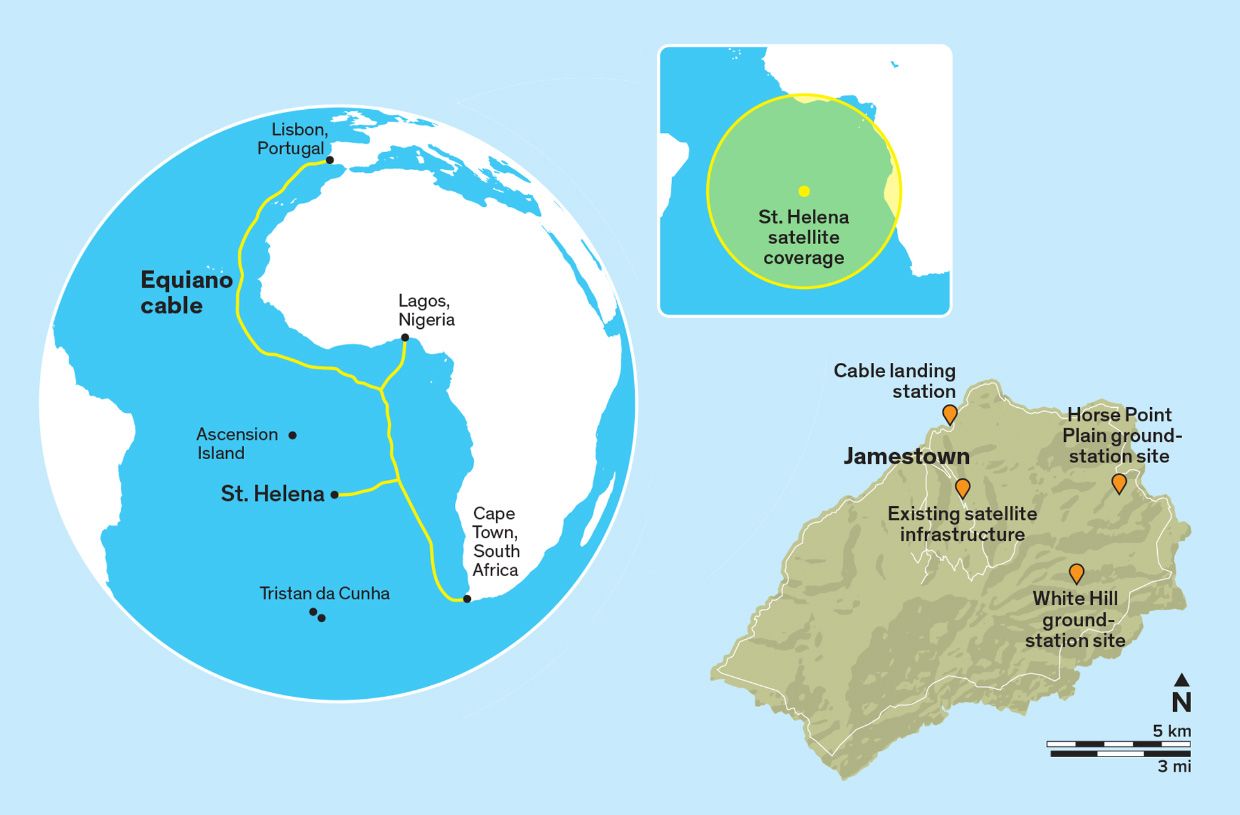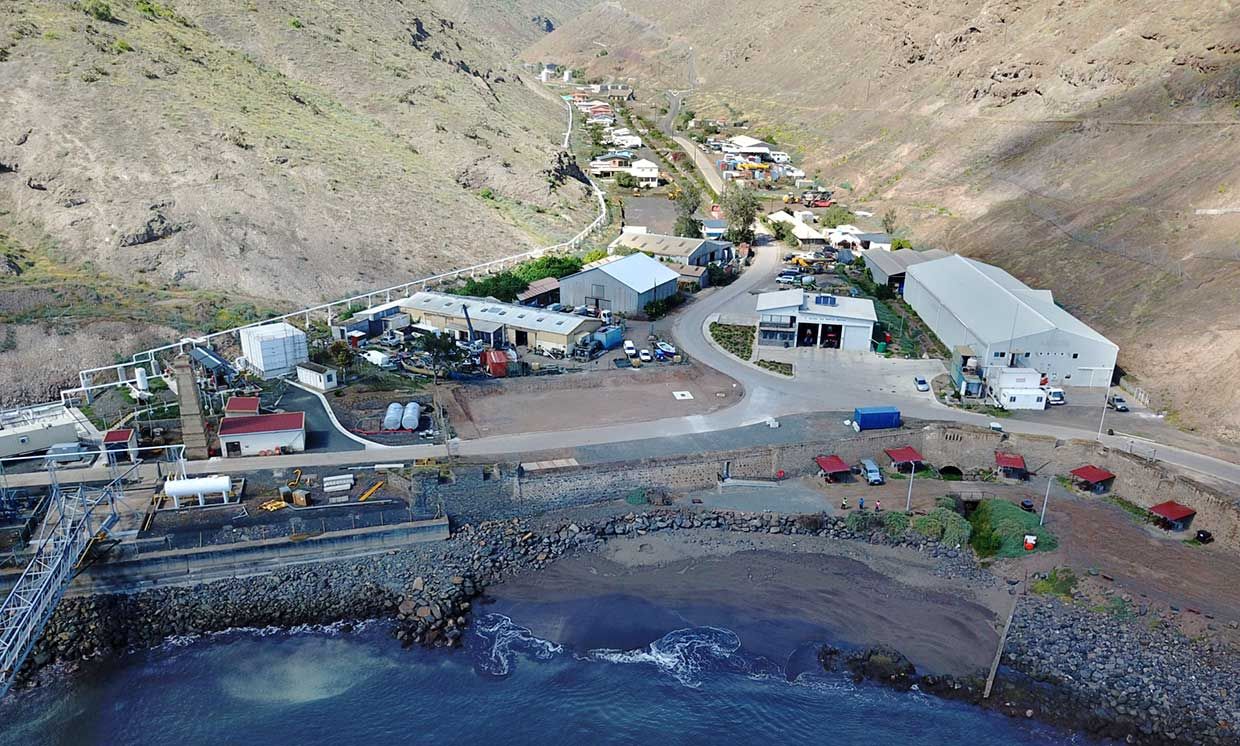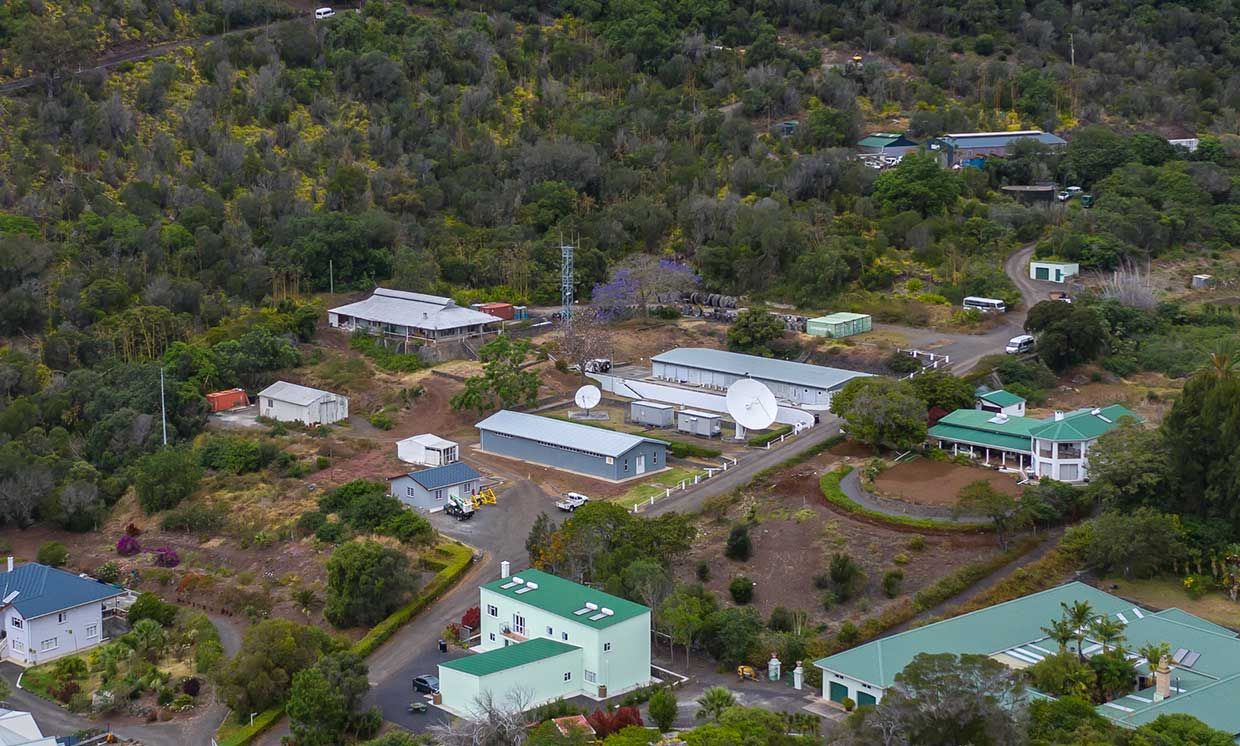St. Helena's New Undersea Cable Will Deliver 18 Gbps Per Person

 Photo: Shutterstock Remote Link: St. Helena's capital, Jamestown, is the port and communications hub for the island's 4,500 residents.
Photo: Shutterstock Remote Link: St. Helena's capital, Jamestown, is the port and communications hub for the island's 4,500 residents. Since 1989, the island of St. Helena in the South Atlantic has relied on a single 7.6-meter satellite dish to connect the island's residents to the rest of the world. While the download and upload speeds have increased over the years, the roughly 4,500 Saints, as the island's residents call themselves, still share a measly 40-megabit-per-second downlink and a 14.4-Mbps uplink to stay connected.
But come April, they'll be getting quite an upgrade: An undersea cable with a maximum capacity of 80 terabits per second will make landfall on the island. That's a higher data rate than residents can use or afford, so the island's government is looking to satellite operators to defray the costs of tapping into the cable's transmissions. However, an incumbent telecom monopoly, and the outdated infrastructure it maintains, could turn the entire project into a cable to nowhere.
Laying an undersea cable to an island with fewer than 5,000 inhabitants is obviously a terrible business idea. Someone has to pay for the seafloor route surveys, the manufacturing and laying of the fiber-optic cable and other hardware, and the ongoing operational costs. St. Helena, part of the British Overseas Territories, was able to pay for its cable only because the European Union's European Development Fund granted the island 21.5 million in 2018 for that exact purpose.
 Illustration: Chris Philpot
Illustration: Chris Philpot Coverage Area: Remote St. Helena is one of the only spots in the south Atlantic that can provide LEO constellation coverage. Despite rugged terrain, the small island nevertheless has a few promising locations being assessed for ground-station sites.
St. Helena signed a contract with Google in December 2019 under which it would pay for a branch off the Equiano cable, which Google is currently laying from Portugal to South Africa. All that remained was finding someone to use and pay for the bulk of the data once it was flowing to the island. The minimum bandwidth that can be delivered by a single wavelength over the cable is 100 gigabits per second, still too much for St. Helena.
In recent years, several companies have begun launching low Earth orbit (LEO) satellite constellations to provide broadband service, with SpaceX's Starlink being perhaps the most prominent example. Like any communications satellite, these connect users who can't tap into terrestrial networks, whether because of distance or geography, by acting as a relay between the user and a ground-station antenna elsewhere that connects to an Internet backbone. The roughly 150-kilogram satellites in LEO constellations offer lower-latency connections compared with those of larger satellites up higher in geostationary orbits, but the trade-off is that they cannot see nearly as much of Earth's surface. This limitation means the satellites need a scattering of regularly spaced ground stations to complete their connections.
The scheme also creates ocean-size problems in maintaining coverage for airplanes, ships, and islands. These can connect directly to a LEO satellite, but then there needs to be a connection from the satellite to Earth's terrestrial networks. Hence the need for a ground station with access to a long-haul cable.It's critical to find places where there's a little bit of land," says Michele Franci, who is in charge of operations at the LEO satellite company OneWeb, one of the companies interested in building on the island. Without anything, there will be a hole in the coverage."
 Photo: I&T Technical Section/St. Helena Government Landing Zone: The undersea cable will come ashore at Rupert's Wharf next to the capital of Jamestown.
Photo: I&T Technical Section/St. Helena Government Landing Zone: The undersea cable will come ashore at Rupert's Wharf next to the capital of Jamestown. St. Helena is one of the few little bits of land in the South Atlantic. So when OneWeb learned of the proposed Equiano cable, the benefits of having a ground station on the island became apparent. Without that cable, it would not have been a feasible option," Franci says. OneWeb filed for bankruptcy in March 2020 but has been bought jointly by the British government and the Indian telecom company Bharti Global.
Christian von der Ropp, who launched a campaign in 2011 to connect St. Helena to an undersea cable, sees ground stations as the ideal way to offset the cable's operating costs. With OneWeb and other companies that have expressed some level of interest such as SpaceX and Maxar paying for the bulk of the throughput, Saints can siphon off the bit of data they need to conduct business and stay in touch with family and friends working off-island.
But von der Ropp, a satellite-telecom consultant, does foresee a last-mile problem in bringing high-speed connections to Saints, and he blames it on the island's telecom monopoly, Sure. They are terribly exploiting the islands," von der Ropp declares. Pay-TV packages can cost 40 per month, which is a lot on an island where the average monthly income comes to about 700. Sure also charges up to 600 percent premiums for any data usage that exceeds the amount in a subscriber's plan. Von der Ropp says Sure's infrastructure is insufficient and that Saints would experience throttled connections in the last mile. However, Christine Thomas, the chief executive for Sure's operations on St. Helena, says that Sure's prices have been approved by the island government. Thomas also says that the company has invested 3 million in building out the island's infrastructure since 2013, and recognizes the need for further upgrades to match the cable's throughput.
 Photo: Craig Williams/St. Helena Phantom View Satellite Access: Until the undersea cable is completed and switched on, the entire island relies on a single satellite connection for off-island communications.
Photo: Craig Williams/St. Helena Phantom View Satellite Access: Until the undersea cable is completed and switched on, the entire island relies on a single satellite connection for off-island communications. Sure's current contract with the St. Helena government runs through 31 December 2022. While the cable spur off the Equiano cable to St. Helena will land on the island in April, it will not carry data until early 2022, when the entire cable is completed. The island's government is currently drafting new telecom regulations and exploring the possibility of issuing a license to a different provider after Sure's term expires.
Meanwhile, von der Ropp, along with island resident Karl Thrower, who worked on communications infrastructure in Europe before moving to the island, plans to create a nonprofit service provider called Saintel as an alternative to Sure. The two propose that Saintel build new millimeter-wave and laser-link infrastructure to provide high-speed connections from the cable's endpoint and fund it in part by offering its network as a test bed for those technologies.
Despite an entrenched monopoly and poor infrastructure-not to mention the coronavirus pandemic, resulting in severely restricted travel to the island for preliminary cable and ground-station work-St. Helena can act as a model for how to connect other remote islands. OneWeb's Franci notes that building ground stations on St. Helena will also improve satellite connections for the island of Tristan de Cunha, about 2,400 kilometers to St. Helena's south. And other parts of the world's oceans need coverage, too: For example, there are large gaps in LEO coverage below the 45th parallel south that could be plugged by islands with ground stations.
The places that used to be isolated and not really part of the mainstream now become relevant," Franci says. While St. Helena will be as remote as ever, at least it will no longer be isolated.
A version of this article appears in the January 2021 print issue as A Small Island Waits On Big Data Rates."